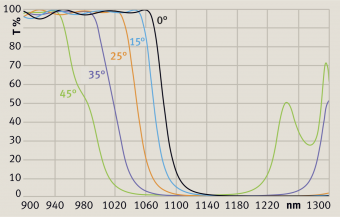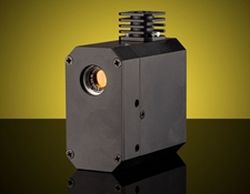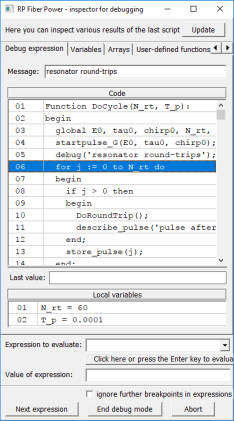Variable Optical Attenuators
Acronym: VOA
Definition: optical attenuators with a variable degree of attenuation
More general term: optical attenuators
German: einstellbare/variable optische Abschwächer
How to cite the article; suggest additional literature
Author: Dr. Rüdiger Paschotta
Optical attenuators are devices for reducing the optical power of a light beam, for example a free-space laser beam or a telecom signal sent through an optical fiber. Some attenuators have a degree of attenuation which is either manually adjustable or can be controlled with an electrical signal. They can be based on different operation principles, which are explained in the following sections. Depending on the requirements, which vary substantially between different applications, different technological approaches can be appropriate.
Variable optical attenuation can be used for various purposes; some examples:
- Signal levels in optical fiber communications systems may be adjusted.
- One may test the bit error rate of a telecom system as a function of signal power level at the receiver.
- One may use a variable laser power in various applications, where direct adjustment of the laser output e.g. via the pump power is not practical.
Bulk Attenuators
Filter Wheels
A simple approach would be to use fixed attenuators which can easily be exchanged and possibly combined. However, it is more convenient to use a filter wheel, e.g. of neutral density filter type, where a variable degree of attenuation can be adjusted simply by rotating the wheel to another position. The rotation may be done manually or with a motorized drive, possibly with computer control. Some variable reflectivity mirrors are also suitable for such applications.
The attenuation may vary in steps or continuously; in the latter case, one will of course have some variation of attenuation across the beam profile.
Absorbing filters are quite limited in terms of power handling capability.
Rotated Dielectric Mirrors
For high-power applications, one will usually use a device where a variable fraction of the incident power can be sent into a robust beam dump. One such possibility is to use rotated dielectric mirrors.
For an input with constant wavelength, one may use an edge filter with a variable tilt angle, so that the filter edge can be varied. While the reflected beam will have a substantially varying propagation direction, the transmitted beam exhibits only a variable parallel offset, which may either be small enough to be tolerated (if a thin substrate is used) or can somehow be compensated, e.g. by using two such devices in a sequence, which are rotated in synchronism.
The attenuation of such devices will typically be polarization-dependent, which however is often not a problem when using such devices with linearly polarized laser beams.
Rotated Polarization Devices
If the input beam is linearly polarized, one may first apply a variable rotation of the polarization direction with a rotatable half-waveplate and then use a polarizer. This type of device may also be able to handle very high optical powers; the rejected beam can be sent into a beam dump.
Liquid Crystal Attenuators
Liquid crystal modulators can be used for obtaining electrically adjustable attenuation. The liquid crystal device actually only modifies the polarization state, which causes variable attenuation in a subsequent polarizer. Usually, linear polarization at the input is expected, although polarization-independent designs are possible. The power handling capability is modest.
Fiber-optic Attenuators
Variable optical attenuation for fiber devices can be introduced in different ways, for example via variable (mis)alignment of fiber ends in the longitudinal or transverse direction, or via variable bending, causing bend losses. For multimode fibers, such approaches could lead to strongly mode-dependent losses, but many fiber-optic attenuators are actually of the single-mode type, where such kind of problems cannot occur.
For obtaining variable losses in multimode devices while avoiding mode-dependent and polarization-dependent losses, one may have to use some kind of bulk-optical variable attenuator between two fiber collimators.
Fiber-optic attenuators can be inline devices, incorporated into fiber patch cables.
Performance Factors
Various kinds of performance figures may be relevant for variable optical attenuators:
- the range in which the attenuation can be adjusted (e.g. 0.5 to 10 decibels)
- the accuracy and reproducibility
- polarization dependence
- in case of multimode fibers, the mode dependence of the attenuation
- in case of bulk devices, the uniformity of attenuation across the beam profile, the introduced wavefront distortions and possibly changes of beam direction
- the maximum allowed optical input power
- the range of operation wavelengths with reasonably constant attenuation (e.g. the telecom C band, 1530–1565 nm), and the maximum difference in attenuation within that wavelength band
- for electrically controlled attenuators, the speed of adjustment
- the power handling capability
Suppliers
The RP Photonics Buyer's Guide contains 36 suppliers for variable optical attenuators. Among them:


Laseroptik
LASEROPTIK can provide coatings for variable optical attenuators. One can change the transmission by tilting an edge filter, with highest transmission at normal incidence and typical operation for angles of incidence between 0° and 45°.

EKSMA OPTICS
Variable attenuators for high power Nd:YAG laser or femtosecond Ti:sapphire laser applications.


Edmund Optics
Edmund Optics offers EO motorized attenuators where s-polarized and p-polarized beams are separated with a rotating quartz λ/2 waveplate. Varying the rotation of the waveplate changes the intensity ratio of the two beams without causing energy fluctuations. These attenuators are mounted with a high contrast polarizer allowing for better than 3000:1 contrast (Tp:Ts). EO motorized attenuators feature an intuitive software interface and compact design, simplifying system integration for precise remote control of laser intensity.
Questions and Comments from Users
Here you can submit questions and comments. As far as they get accepted by the author, they will appear above this paragraph together with the author’s answer. The author will decide on acceptance based on certain criteria. Essentially, the issue must be of sufficiently broad interest.
Please do not enter personal data here; we would otherwise delete it soon. (See also our privacy declaration.) If you wish to receive personal feedback or consultancy from the author, please contact him e.g. via e-mail.
By submitting the information, you give your consent to the potential publication of your inputs on our website according to our rules. (If you later retract your consent, we will delete those inputs.) As your inputs are first reviewed by the author, they may be published with some delay.
See also: optical attenuators, variable reflectivity mirrors
and other articles in the category photonic devices
 |





If you like this page, please share the link with your friends and colleagues, e.g. via social media:
These sharing buttons are implemented in a privacy-friendly way!